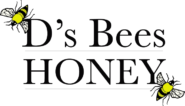All You Need To Know About Honey
What exactly is honey?
Honey is a natural sweetener and high energy food for bees. Honeybees make honey from nectar collected fr om flowering trees, plants and bushes and store it in their honey stomach until they can bring it back to the hive.. At the moment the nectars reach the honey stomach, enzymes begin to break down the complex sugars of the nectar into a unique blend of simpler sugars that are easier to digest.
Honeybees need honey for energy during the busy summer months and to stay warm during the winter. Our honeybees are bred to make and store more honey then they need so after leaving them plenty of honey for the winter, we take what’s left, package it and sell it to you.
How many bees does it take to make 500 grams of honey?
A single honeybee visits between 50 and 100 flowers during one collection flight from the hive. In order to produce 500 grams of honey, 2 million flowers must be visited.
Is Honey healthier than sugar?
That’s a good question. Honey should be counted as a form of sugar if you are managing a sugar restricted diet. As a natural product honey has a slightly different mix of fructose and glucose than the white granulated sugar you buy in the supermarket. It also contains trace amounts of micronutrients and if coarsely filtered as we do, it will contain some micro grains of pollen. Many people beieve that this gradual exposure to pollen can help prevent pollen allergies.
The difference between the digestion of honey compared to the digestion of sugar lies in the composition of enzymes. The enzymes in the stomach cannot break down the glucose-fructose structure of table sugar until it reaches the small intestine. Honey is different because of the enzymes that are added to the nectar by bees that divide the sucrose into two simple sugars, fructose and glucose. These sugars are directly absorbed by our bodies and are easier to digest.
Honey is not recommended for infants under one year of age. Infants are susceptible to the disease “infant botulism” which is caused by spores present in natural foods. These spores are consumed without harm by children over 6 months and adults.
Why does our honey crystallize/granulate and become solid?
All our honey is liquid when it first comes out of the hive. Raw honey also contains small particles of pollen, beeswax, propolis and other nutrients. These ‘extras’ are largely responsible for raw honey’s extra health benefits.. Those little particles we leave in are the reason that raw honey is more likely to crystallize over a pasteurized or fully processed product.
Honey will naturally crystallize if it sits in your cupboard for any length of time. The crystallization will even be different in different kinds of honey depending on the nectar it was made from.
If you would like to have liquid honey on hand just take what you need from our container and gently warm it and it will quickly turn back to liquid honey. Repeated warming and cooling will degrade the flavour – so only warm what you will soon consume or use.
What happens to the bees in the winter?
Bees do not hibernate. They form a cluster in the hive surrounding the queen and vibrate to generate heat and keep her warm. The cluster moves across the frames, consuming honey to generate the energy they need to stay warm.

